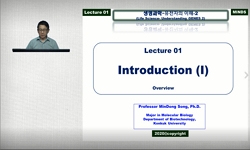<P><B>Abstract</B></P> <P>Glycosyltransferases (GTs) are key enzymes for the post-modification of secondary metabolites in drug development processes. In our prior research, an one-pot enzymatic system produced α-m...
http://chineseinput.net/에서 pinyin(병음)방식으로 중국어를 변환할 수 있습니다.
변환된 중국어를 복사하여 사용하시면 됩니다.
- 中文 을 입력하시려면 zhongwen을 입력하시고 space를누르시면됩니다.
- 北京 을 입력하시려면 beijing을 입력하시고 space를 누르시면 됩니다.
https://www.riss.kr/link?id=A107464116
- 저자
- 발행기관
- 학술지명
- 권호사항
-
발행연도
2018
-
작성언어
-
- 주제어
-
등재정보
SCOPUS,SCIE
-
자료형태
학술저널
-
수록면
76-82(7쪽)
- 제공처
-
0
상세조회 -
0
다운로드
부가정보
다국어 초록 (Multilingual Abstract)
<P><B>Abstract</B></P> <P>Glycosyltransferases (GTs) are key enzymes for the post-modification of secondary metabolites in drug development processes. In our prior research, an one-pot enzymatic system produced α-mangostin 3,6-di-O-β-D-glucopyranoside (Mg1) at a higher proportion using wild-type glycosyltransferase (YjiC) but α-mangostin 3-O-β-D-glucopyranoside (Mg2) exhibited markedly higher anti-bacterial activities. This study focuses on a <I>Bacillus licheniformis</I>-originated flexible glycosyltransferase by mutagenesis to examine the active site residues involved in glycosylation for a product specificity towards Mg2. The generated H298A, H298S, and H298C mutants of YjiC exhibited a regiospecificity towards glycosylated product (Mg2) and were targeted in this study. The production pattern of Mg1 decreased to 63 (H298A), 85 (H298S) and 95% (H298C) yields compared to the wild-type YjiC. The increase of uridine 5′-diphosphate (UDP) leading to the inhibition of enzyme activity and production of uridine 5′-diphosphate glucose (UDP-glucose) in overall system was critical for the specific glycosylated product formation rate. H298A, H298S, and H298C mutants and YjiC exhibited 244, 251, and 186% increases in Mg2 production yields, respectively. And also H298A, H298S, and H298C showed 281, 279, and 251% increases in yield of Mg3 compared with wild type YjiC, respectively. There was improved conversion of both mono-glucosides product (Mg2a and Mg3) than di-glucosides products. The H298 mutants were found to overcome the limitation of the wild-type YjiC for regioselective synthesis of Mg2 by an enzymatic system.</P> <P><B>Highlights</B></P> <P> <UL> <LI> H298 mutants can produce mono-glucoside because of a reduced deglycosylation activity and UDP inhibition. </LI> <LI> H298A, H298S, and H298C mutants and YjiC exhibited 244, 251, and 186% increases in Mg2 production yields, respectively. </LI> <LI> Engineered YjiC can be utilized for regiospecific glycosylation of numerous chemical structure on polyketides, flavonoids etc. </LI> </UL> </P>
동일학술지(권/호) 다른 논문
-
- Elsevier
- Hong, Yun-Gi
- 2018
- SCOPUS,SCIE






 ScienceON
ScienceON


